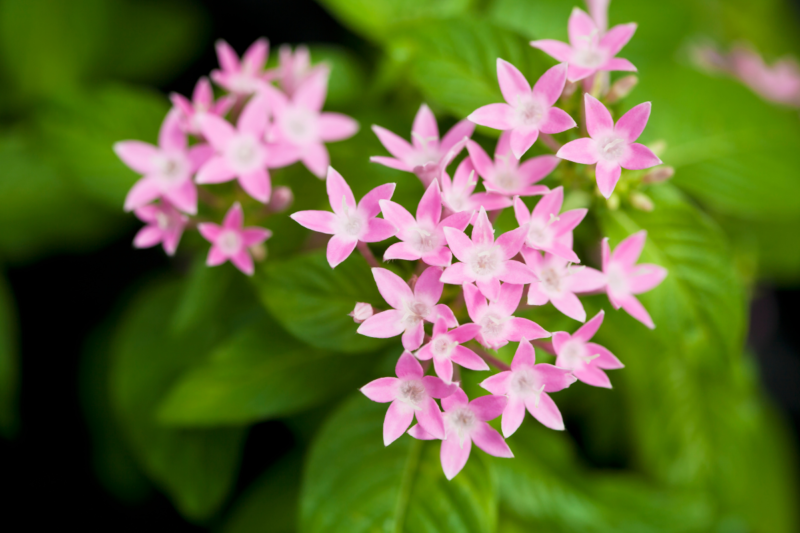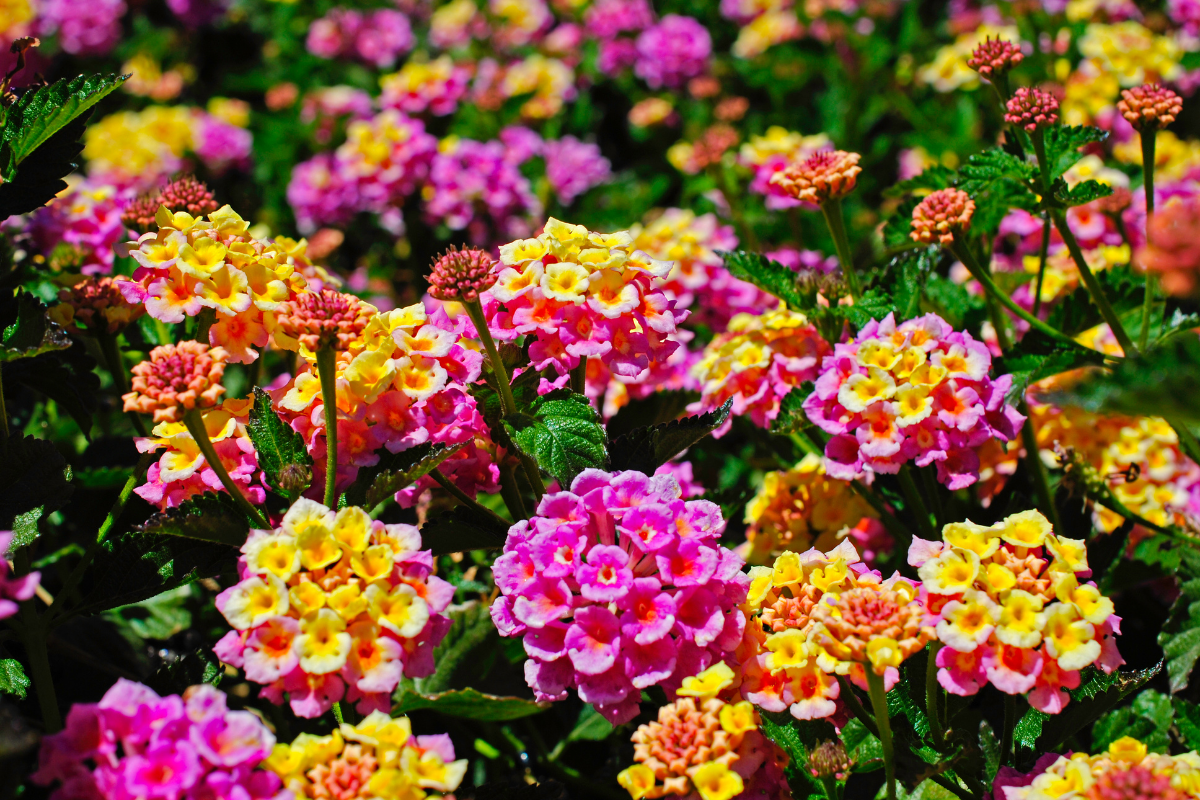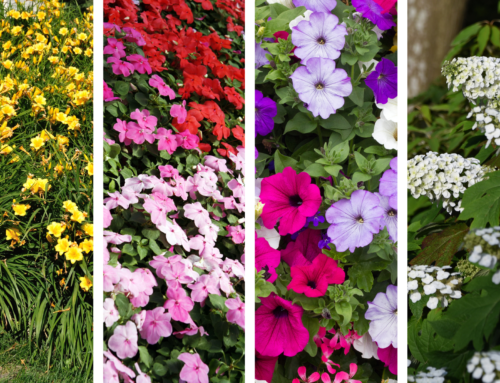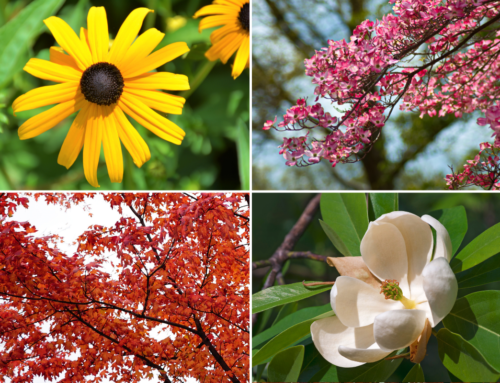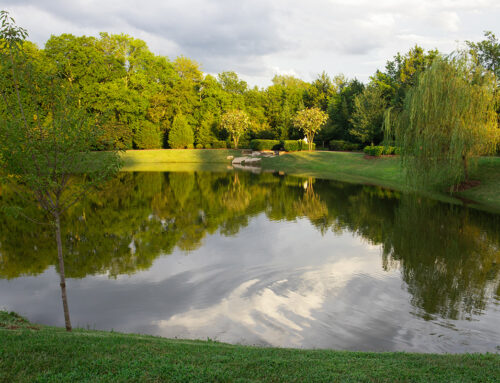Table of Contents
Nashville Landscaping: 10 Tough Flowers that Thrive in Hot Weather
Yellow Coneflower (Echinacea paradoxa)
The Echinacea paradoxa, also called the yellow coneflower, is a bright perennial with a dark brown center and thin yellow petals. In the Echinacea genus, the Echinacea paradoxa is the only one with yellow petals instead of typical purple. The yellow coneflower grows 2-3 feet in height and about 1 to 1.5 feet wide. This perennial thrives in full sun and is a fairly low maintenance option.
To learn more, check out the Missouri Botanical Garden Plant Profile, Echinacea paradoxa.

Butterfly Weed (Asclepias tuberosa)
The Asclepias tuberosa, also called the butterfly weed, is a bright yellowish-orange perennial that grows 1 – 2.5 feet high and 1 – 1.5 feet wide. The butterfly weed is a great low maintenance option because it’s drought-tolerant and also grows well in poor, dry soil. This plant also attracts butterflies and has a nice lengthy bloom period from late Spring through Summer.
For more information, check out the Missouri Botanical Garden Plant Profile, Asclepias tuberosa.

Sweet William (Dianthus barbatus)
The Dianthus barbatus, also called sweet william, is a perennial, sometimes a biennial or annual made up of red, pink, and white flowers. The sweet william grows 1-2 feet tall and about 0.5-1 foot wide. These flowers grow well in full sun to partial shade and have medium watering requirements. Sweet williams typically bloom from late spring to early summer and are great for attracting butterflies and hummingbirds.
For more information, check out the Missouri Botanical Garden Plant Profile, Dianthus barbatus.

Garden phlox (Phlox paniculata)
The Phlox paniculata, also called a garden phlox, is a herbaceous perennial native to the Eastern United States. The garden phlox grows 2-4 feet high and 2-3 feet wide. These flowers are usually pink, purple, rose, lavender, red, and even white. They grow best in full sun to partial shade and require medium watering and maintenance. The garden phlox can be used for perennial borders and are also great for attracting hummingbirds.
For more information, check out the Missouri Botanical Garden Plant Profile, Phlox paniculata.
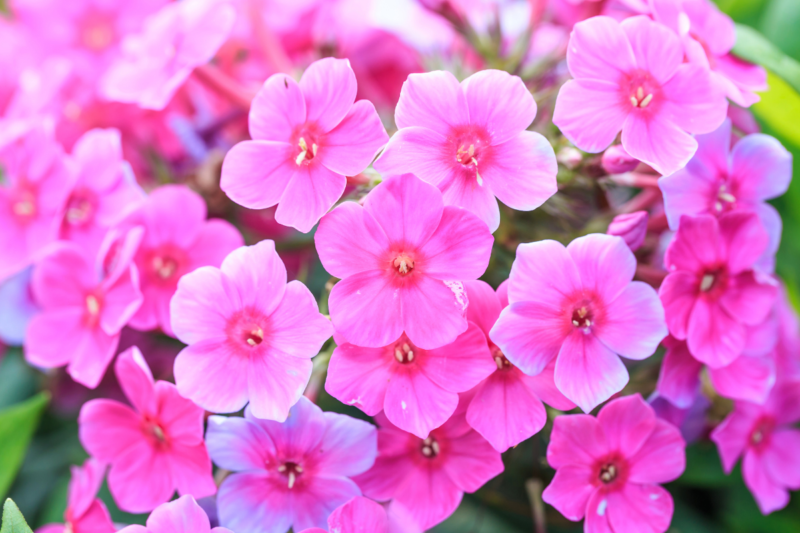
Large Coneflower (Rudbeckia maxima)
The Rudbeckia maxima, also called the large coneflower, is a beautiful perennial wildflower native to the Central and Eastern United States areas. The large coneflower grows 5-7 feet high and 3-4 feet wide. This flower typically blooms from June to July and is great for attracting butterflies. The large coneflower is a great addition to almost anywhere including native plant gardens as well as any naturalized areas (prairies, wildflowers, woodlands, and forest gardens).
For more information, check out the Missouri Botanical Garden Plant Profile, Rudbeckia maxima.
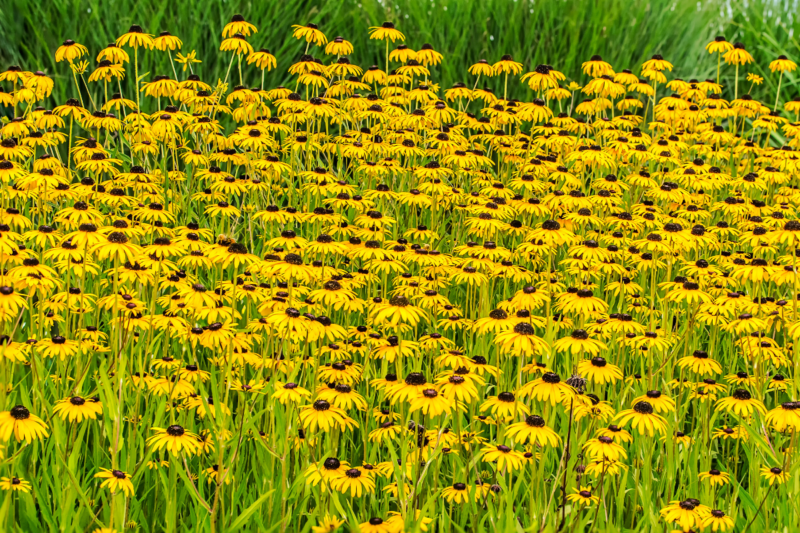
Purple Coneflower (Echinacea purpurea)
The Echinacea purpurea, also called the purple coneflower, is a herbaceous perennial native to Eastern North America growing about 2-5 feet tall and 1.5-2 feet wide. The purple coneflower grows best in full sun to partial shade and usually blooms from June to August. This flower is a great choice for pretty much any area in Zones 3-8, whether it’s for a native plant garden, border, woodland garden, or any other naturalized area.
For more information, check out the Missouri Botanical Garden Plant Profile, Echinacea purpurea.

Daylily (Hemerocallis ‘Stella de Oro’)
The Hemerocallis ‘Stella de Oro’, also known as the daylily, is a herbaceous perennial native to Asia and central Europe. Daylilies come in a variety of yellows and typically grow up to one foot tall and up to one foot wide. These flowers are a popular, low maintenance option with medium watering requirements. Daylilies grow best in full sun to partial shade and usually grow in clumps making them great for covering large areas. They make great borders and edges too.
For more information, check out the Missouri Botanical Garden Plant Profile, Hemerocallis ‘Stella de Oro’.
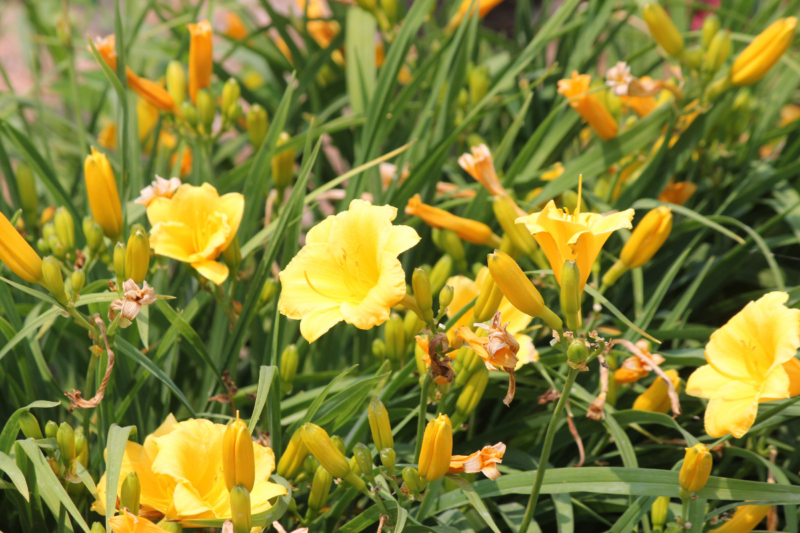
Lantana (Lantana camara)
The Lantana camara, also known as the Lantana, is an evergreen shrub native to Central and South America. The Lantana typically grows 3-4 feet tall and 1-3 feet wide and grows best in full sun. This shrub typically has multi-colored white, yellow, red, and orange clusters of flowers blooming from July to winter.
For more information, check out the Missouri Botanical Garden Plant Profile, Lantana camara.

Siberian iris (Iris ‘Caesar’s Brother’)
The Iris ‘Caesar’s Brother, also known as the Siberian iris, is a deep purple-colored herbaceous perennial growing 3-4 feet tall and 2.5-3 feet wide. The Siberian iris is a great low-maintenance flower that grows best in full sun to partial shade with medium water requirements. These flowers are great for mixing with other perennials, planting on hills or slopes, or even along water edges.
For more information, check out the Missouri Botanical Garden Plant Profile, Iris ‘Caesar’s Brother’.
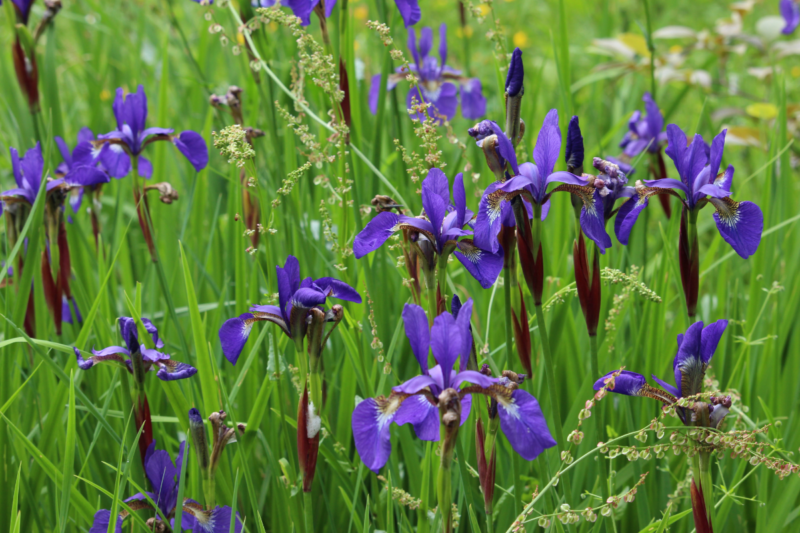
Egyptian Star Flower (Pentas lanceolata)
The Pentas lanceolata, also known as the Egyptian star flower, is a herbaceous perennial with clusters of pink, magenta, lilac, and white star-shaped flowers typically blooming from early summer to winter frost. The Egyptian star flower is native from Yemen to East Africa and grows best in full sun with medium water requirements. These flowers usually grow about 1-2 feet tall and 1-2 feet wide, and are great for flower beds, borders, edges, or even as house plants.
For more information, check out the Missouri Botanical Garden Plant Profile, Pentas lanceolata.
